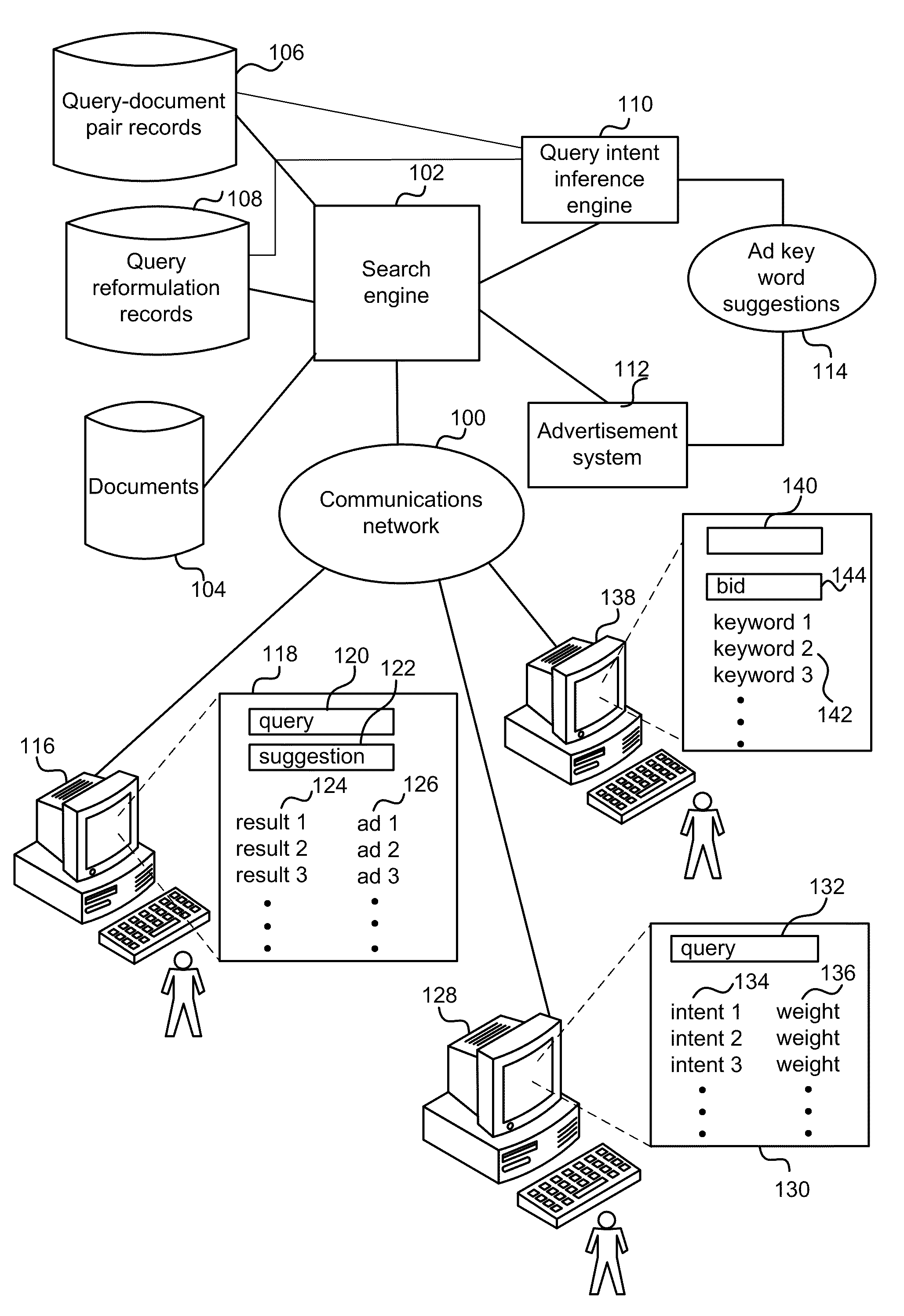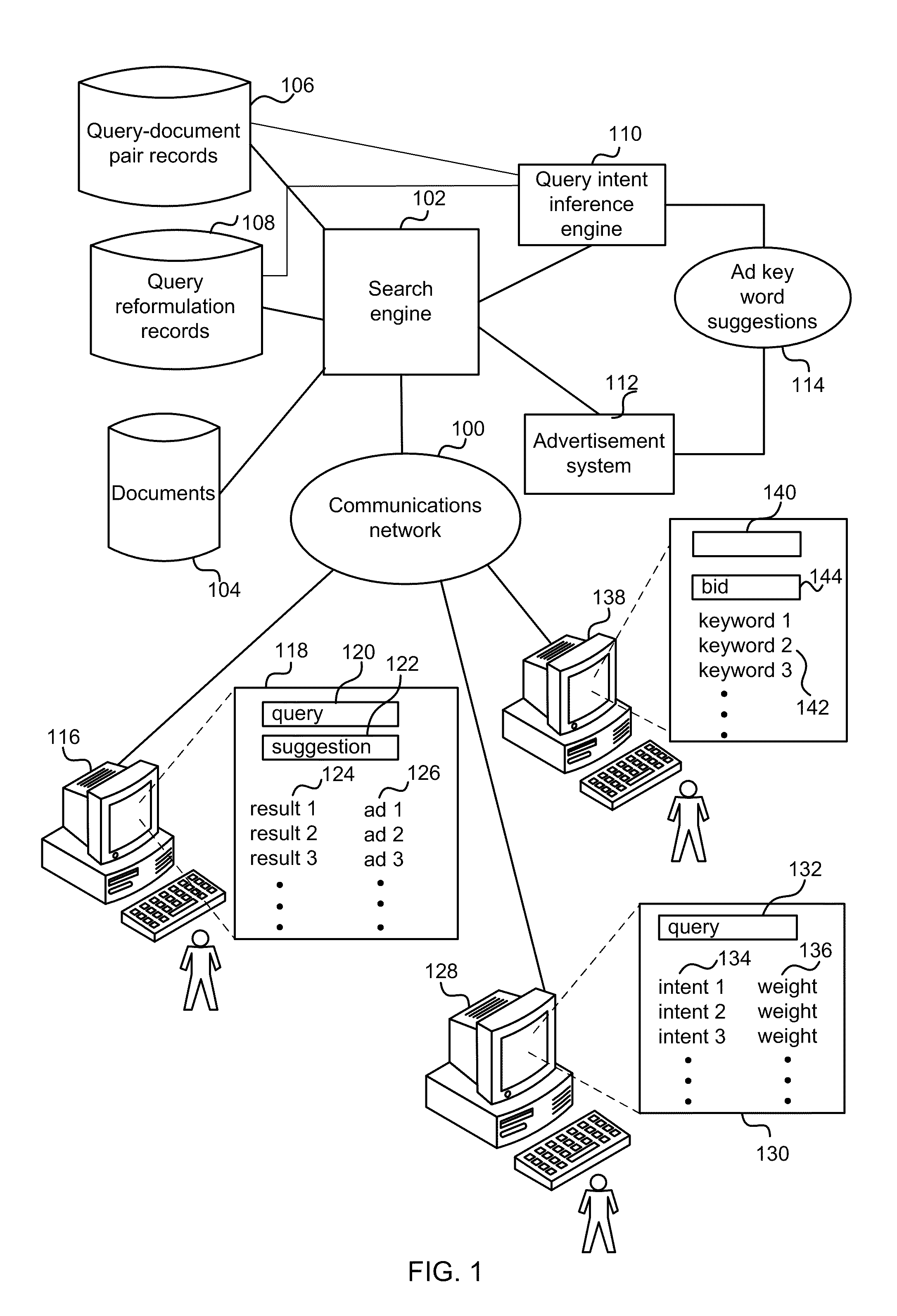Query Intent in Information Retrieval
a technology of information retrieval and intent, applied in the field of query intent in information retrieval, can solve the problems of difficult to infer the intent of queries, often mistyped queries by real users, and often unclear web search queries, so as to improve the accuracy. the effect of precision
- Summary
- Abstract
- Description
- Claims
- Application Information
AI Technical Summary
Benefits of technology
Problems solved by technology
Method used
Image
Examples
Embodiment Construction
6]FIG. 8 is a flow diagram of an example method of applying weights to query clusters;
[0017]FIG. 9 is a schematic diagram of examples of weighted query clusters;
[0018]FIG. 10 illustrates an exemplary computing-based device in which embodiments of an information retrieval system may be implemented.
[0019]Like reference numerals are used to designate like parts in the accompanying drawings.
DETAILED DESCRIPTION
[0020]The detailed description provided below in connection with the appended drawings is intended as a description of the present examples and is not intended to represent the only forms in which the present example may be constructed or utilized. The description sets forth the functions of the example and the sequence of steps for constructing and operating the example. However, the same or equivalent functions and sequences may be accomplished by different examples.
[0021]Although the present examples are described and illustrated herein as being implemented in a web search syst...
PUM
 Login to View More
Login to View More Abstract
Description
Claims
Application Information
 Login to View More
Login to View More - R&D
- Intellectual Property
- Life Sciences
- Materials
- Tech Scout
- Unparalleled Data Quality
- Higher Quality Content
- 60% Fewer Hallucinations
Browse by: Latest US Patents, China's latest patents, Technical Efficacy Thesaurus, Application Domain, Technology Topic, Popular Technical Reports.
© 2025 PatSnap. All rights reserved.Legal|Privacy policy|Modern Slavery Act Transparency Statement|Sitemap|About US| Contact US: help@patsnap.com



